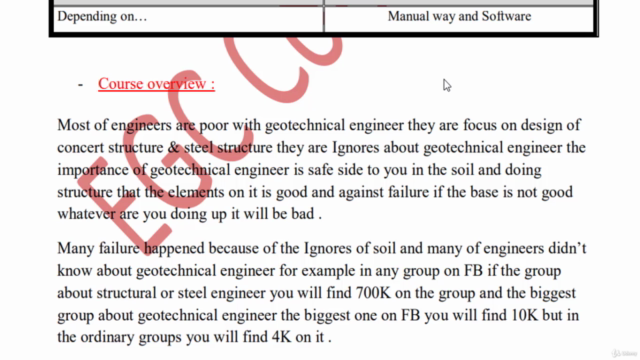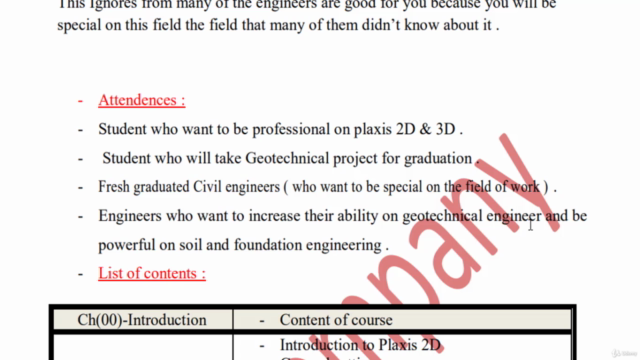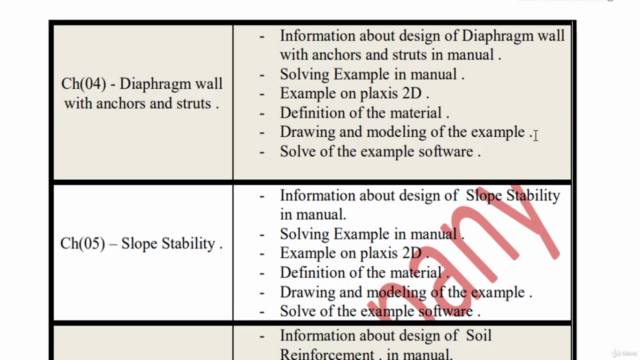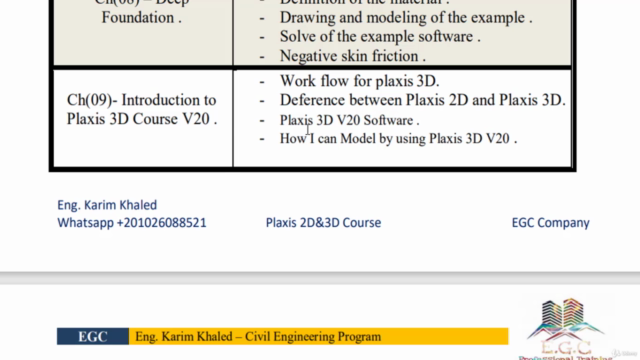Learning Plaxis 2D and 3D in English

Why take this course?
👷♂️ Learning Plaxis 2D and 3D for Geotechnical Engineering 🌍
Course Instructor: Karim El Khalat
Course Title: Powerful Geotechnical Engineer with Plaxis 2D & 3D
Master the Art of Geotechnical Engineering with cutting-edge software tools!
Course Overview:
In this comprehensive course, you'll dive deep into the world of geotechnical engineering using Plaxis 2D and 3D – essential tools for any engineer looking to model soil structures accurately. From the basics to advanced techniques, you'll learn through a structured curriculum designed to take your expertise to the next level.
What You'll Learn:
Chapter 1: Introduction to Plaxis
- Overview of the Course: Understand what this course offers and how it can transform your geotechnical engineering skills.
- Chapter 2: Introduction to Plaxis 2D
- General Settings: Learn the foundational settings that will guide your Plaxis 2D projects.
- Tool Bar & Drawing Tools: Get familiar with the toolbar and essential drawing tools for precise model creation.
- Material Definition: Understand how to define materials accurately within the software.
- Cross Section in Soil: Master the technique of drawing cross sections in soil for comprehensive analysis.
- Solving Cross Sections: Discover how to effectively solve cross sections to gain valuable insights into soil behavior.
Chapter 3: CSI vs. Plaxis 2D
- Understanding the Differences: Learn the key differences between CSI and Plaxis 2D software.
- Foundation Design in Both Platforms: Compare how foundations are designed and calculated on each platform.
Chapter 4: Introduction to Shoring Systems
- Shoring Technologies: Explore various shoring systems like soldier pile, sheet pile, secant and contiguous pile, diaphragm wall, struts, and tieback systems.
- Design Considerations: Delve into the design aspects of these shoring systems with a focus on safety and efficiency.
- Surcharge Calculation & Warning Notes: Learn how to accurately calculate surcharge acting on shoring systems and key considerations to be aware of.
Chapter 5: Diaphragm Wall with Anchors and Struts
- Design Principles: Understand the design principles outlined in the manual for diaphragm walls with anchors and struts.
- Example Solving: Follow a detailed example from manual to Plaxis 2D, learning how to define materials, draw, model, and solve real-world scenarios.
Chapter 6: Slope Stability
- Design & Analysis: Learn the design principles for slope stability as outlined in the manual and how to analyze slopes using Plaxis 2D.
Chapter 7: Soil Reinforcement
- Design and Modeling: Discover the design process for soil reinforcement and learn how to model these scenarios effectively.
Chapter 8: Shallow Foundations
- W, Isolated Footings, Strip Footing & Raft: Understand the modeling of various shallow foundations and their analysis with Plaxis 2D.
Chapter 9: Deep Foundations
- Pile Modeling: Learn how to model piles and analyze negative skin friction in Plaxis 2D.
Chapter 10: Introduction to Plaxis 3D Course V20
- Workflow for Plaxis 3D: Get to grips with the workflow specific to Plaxis 3D.
- Plaxis 3D V20 Software: Explore the features and capabilities of the latest version of Plaxis 3D.
- Modeling with Plaxis 3D V20: Master modeling techniques using Plaxis 3D V20 for more complex scenarios.
Chapter 11: Shoring Systems for Deep Excavation
- Real-world Examples in Plaxis 3D: Analyze examples of shoring systems for deep excavation to understand the practical application of the software.
Chapter 12: Deep Foundations in Plaxis 3D
- Pile and Raft Analysis: Learn how to analyze piles and raft foundations using Plaxis 3D, providing a comprehensive understanding of deep foundation analysis.
By the end of this course, you'll have a solid grasp of both Plaxis 2D and 3D software, enabling you to tackle complex geotechnical engineering challenges with confidence. Enroll now to embark on your journey to becoming a Powerful Geotechnical Engineer! 🚀🏗️
Enroll today and transform your career with the power of Plaxis! 🎉
Course Gallery




Loading charts...